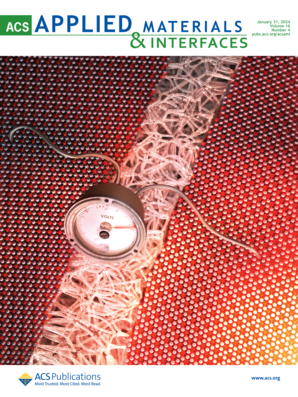无机纳米材料治疗骨关节炎:从运载工具到治疗剂。
IF 8.2
2区 材料科学
Q1 MATERIALS SCIENCE, MULTIDISCIPLINARY
引用次数: 0
摘要
骨关节炎(OA)是一种常见的影响整个关节的异质性疾病。它对目前的治疗提出了重大挑战,目前的治疗仍然基于症状管理,而不是机械地缓解OA。无机纳米材料以其独特的物理化学性质和广泛的应用前景,成为现代材料科学的重要研究领域。本文综述了无机纳米材料在OA治疗中的作用从递送工具到治疗剂的转变。它检查了各种纳米材料,包括碳基、硅基和过渡金属基,它们可以传递药物来减轻关节肿胀、炎症和疼痛。它还强调了无机纳米材料在润滑、光热疗法、电刺激疗法、超顺磁性和类酶活性方面的自主功能。总的来说,这篇综述概括了无机纳米材料在OA治疗中的发展,从单纯作为递送载体到成为治疗剂,预测了它们向OA自主功能和综合治疗发展的未来。本文章由计算机程序翻译,如有差异,请以英文原文为准。
Inorganic Nanomaterials for Osteoarthritis: From Delivery Vehicles to Therapeutic Agents.
Osteoarthritis (OA) is a common heterogeneous disorder affecting the whole joint. It presents significant challenges in current treatment, which remains based on symptomatic management rather than mechanistically alleviating OA. Inorganic nanomaterials have emerged as a significant research field in modern materials science due to their unique physicochemical properties and wide range of potential applications. This review focuses on the transformation of the role of inorganic nanomaterials from delivery tools to therapeutic agents in the treatment of OA. It examines various nanomaterials, including carbon-based, silicon-based, and transition metal-based, that deliver drugs to alleviate swelling, inflammation, and pain in the joint. It also highlights inorganic nanomaterials that function autonomously through lubrication, photothermal therapy, electrical stimulation therapy, superparamagnetic properties, and enzyme-like activities. Overall, this review encapsulates the evolution of inorganic nanomaterials in the treatment of OA, from serving solely as delivery vehicles to becoming therapeutic agents, forecasting a future where they evolve toward autonomous functioning and integrated therapeutics for OA.
求助全文
通过发布文献求助,成功后即可免费获取论文全文。
去求助
来源期刊

ACS Applied Materials & Interfaces
工程技术-材料科学:综合
CiteScore
16.00
自引率
6.30%
发文量
4978
审稿时长
1.8 months
期刊介绍:
ACS Applied Materials & Interfaces is a leading interdisciplinary journal that brings together chemists, engineers, physicists, and biologists to explore the development and utilization of newly-discovered materials and interfacial processes for specific applications. Our journal has experienced remarkable growth since its establishment in 2009, both in terms of the number of articles published and the impact of the research showcased. We are proud to foster a truly global community, with the majority of published articles originating from outside the United States, reflecting the rapid growth of applied research worldwide.
 求助内容:
求助内容: 应助结果提醒方式:
应助结果提醒方式:


